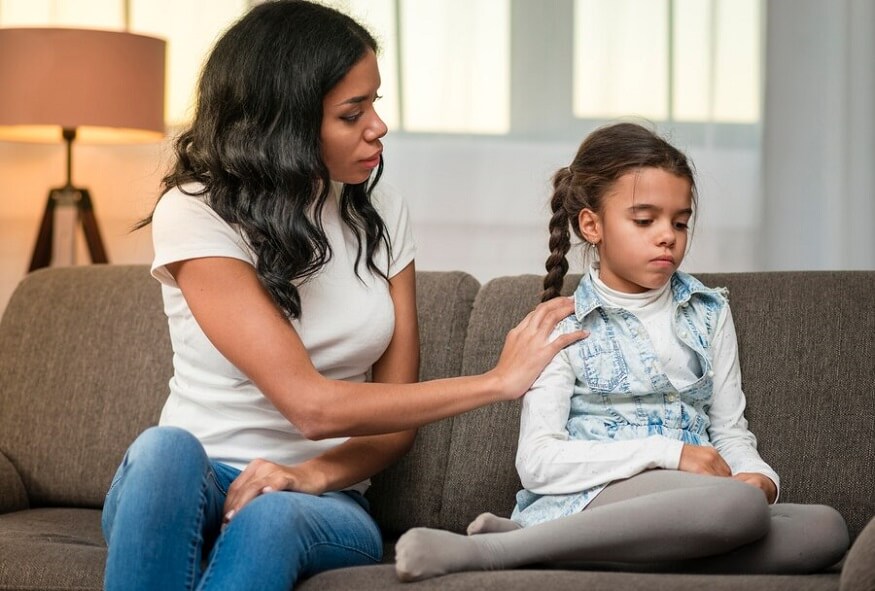Understanding what separation anxiety is and how to manage it is crucial for both parents and educators. This article delves into the concept of separation anxiety, its manifestation in preschoolers, and effective strategies to help them cope with this natural phase.
What is Separation Anxiety?
Separation anxiety is a normal part of child development, typically occurring between the ages of 6 months to 3 years. It is an emotional response triggered when a child perceives a threat or fears being separated from their primary caregivers. This anxiety is a sign of healthy attachment, showcasing the child’s emotional bond with those who provide love, care, and security.
Causes of Separation Anxiety in Preschoolers
Here are some key causes:
1. Developmental Stage
Separation anxiety often coincides with specific developmental stages. During the preschool years, children become more aware of their own identity and the identities of significant others in their lives. This heightened awareness can lead to anxiety when separated from primary caregivers, as they fear being alone or abandoned.
2. Attachment and Bonding
The strength of the attachment between the child and their primary caregivers plays a significant role in separation anxiety. Children who have developed a secure attachment may still experience separation anxiety but can more easily cope with temporary separations, knowing their caregivers will return. In contrast, children with insecure attachments may exhibit more intense anxiety.
3. Cognitive Development
Preschoolers are in a stage of cognitive development where they begin to understand the concept of object permanence – the understanding that objects and people continue to exist even when not directly visible. This newfound awareness can contribute to separation anxiety, as children grasp the idea that their caregivers can leave and return.
4. Fear of the Unknown
The unfamiliarity of new environments, faces, and routines can trigger separation anxiety. Starting preschool or kindergarten, meeting new teachers and classmates, or experiencing changes in daily routines can all be overwhelming for preschoolers. The fear of the unknown can intensify separation anxiety.
5. Parental Anxiety or Stress
Children are highly attuned to their parents’ emotions. If parents are experiencing stress, anxiety, or uncertainties, preschoolers may pick up on these cues and respond with heightened anxiety themselves. A stable and calm parental presence can help mitigate separation anxiety in children.
6. Sensitivity to Transitions
Preschoolers can be sensitive to transitions, both in their daily routines and major life changes. Moving to a new house changes in family dynamics, or starting a new school can be triggers for separation anxiety. Familiarity and consistency in routines can help alleviate some of this anxiety.
7. Previous Negative Experiences
A past negative experience, such as a traumatic separation, can contribute to separation anxiety. An unpleasant or distressing event related to separation may linger in a child’s memory, causing them to associate separations with negative emotions.
8. Parental Absences or Changes
Frequent or prolonged parental absences, whether due to work commitments, travel, or other reasons, can contribute to separation anxiety. Additionally, changes in the primary caregiver, such as a change in daycare providers, can trigger anxiety as the child adjusts to a new relationship.
9. Overprotective Parenting
In some cases, overprotective parenting practices can inadvertently contribute to separation anxiety. When children are not given opportunities to explore their environment independently, they may become more reliant on their caregivers and find separations more challenging.
Also Read: Helping Children Who Experience Nightmares, Night Terrors And Sleepwalking
How to Manage Separation Anxiety
Managing separation anxiety in preschoolers requires a combination of empathy, understanding, and practical strategies. Here are some effective ways to help both parents and educators navigate this developmental phase:
1. Gradual Transitions
Start by easing into separations gradually. Short periods of separation, with the duration increasing over time, can help preschoolers adjust. This might involve leaving the child with a trusted caregiver for brief intervals before extending the time apart.
2. Establishing Predictable Routines
Create a consistent and predictable routine for drop-offs and pick-ups. Children find comfort in knowing what to expect, and a structured schedule helps them feel secure. Having a routine can also serve as a visual cue for the child, making transitions smoother.
3. Positive Goodbyes
Make goodbyes positive and reassuring. Offer hugs, smiles, and affirmations that you will return. It’s essential to keep the farewell short and sweet, avoiding prolonged goodbyes that may increase anxiety. A consistent and positive goodbye routine helps build trust.
4. Familiar Objects from Home
Allow preschoolers to bring a familiar object from home, such as a favourite toy, blanket, or comfort item. This transitional object can provide a sense of security and familiarity in an unfamiliar setting, acting as a source of comfort during moments of separation.
5. Open Communication
Encourage open communication about feelings. Create an environment where preschoolers feel safe expressing their emotions. Acknowledge their concerns and reassure them that it’s okay to miss their parents or caregivers. Being responsive to their feelings fosters a sense of security.
6. Build Relationships with Educators
Foster strong connections between preschoolers and their educators. Encourage positive interactions and communication between parents and teachers. When children feel comfortable with the adults in their new environment, it helps alleviate separation anxiety.
7. Celebrate Independence
Reinforce positive behaviours and celebrate small milestones of independence. Acknowledge and praise the child when they successfully cope with separation. Positive reinforcement boosts their confidence and creates a positive association with the process of being away from their caregivers.
8. Encourage Social Interaction
Facilitate opportunities for preschoolers to interact with their peers. Building friendships and engaging in group activities can be a helpful distraction and provide emotional support. Socialising with other children can make the transition smoother and more enjoyable.
9. Stay Consistent
Consistency is key in managing separation anxiety. Try to maintain a consistent routine, goodbye ritual, and approach to dealing with separation. Predictability helps preschoolers feel more in control of their environment, reducing anxiety.
10.Provide Reassurance
Reassure preschoolers that their parents or caregivers will always come back. Use age-appropriate language to explain the concept of time, such as saying, “I’ll be back after snack time” or “I’ll pick you up after playtime.” This helps build trust and understanding.
11.Involve Preschoolers in the Transition
Involve preschoolers in the process of transition. Allow them to participate in choosing their backpack or snack for the day. Involvement in these decisions gives them a sense of control over their surroundings, reducing anxiety.
Also Read: Parenting tips on how to raise 0-5-Year-Old Kids
EuroSchool creates a nurturing environment that fosters independence and emotional well-being. By employing gradual transitions, establishing routines, and maintaining open communication, we help our young students cope with and overcome separation anxiety.










